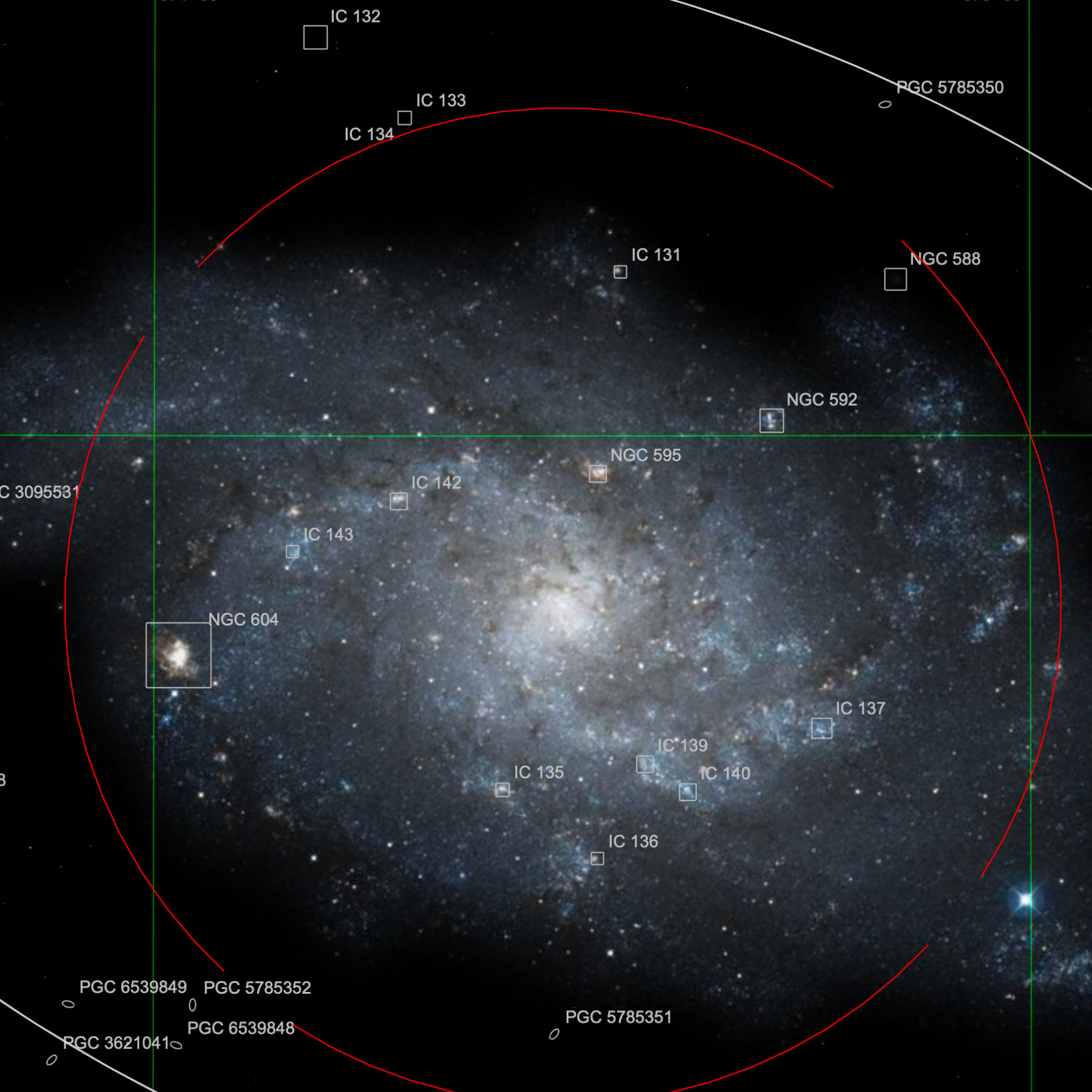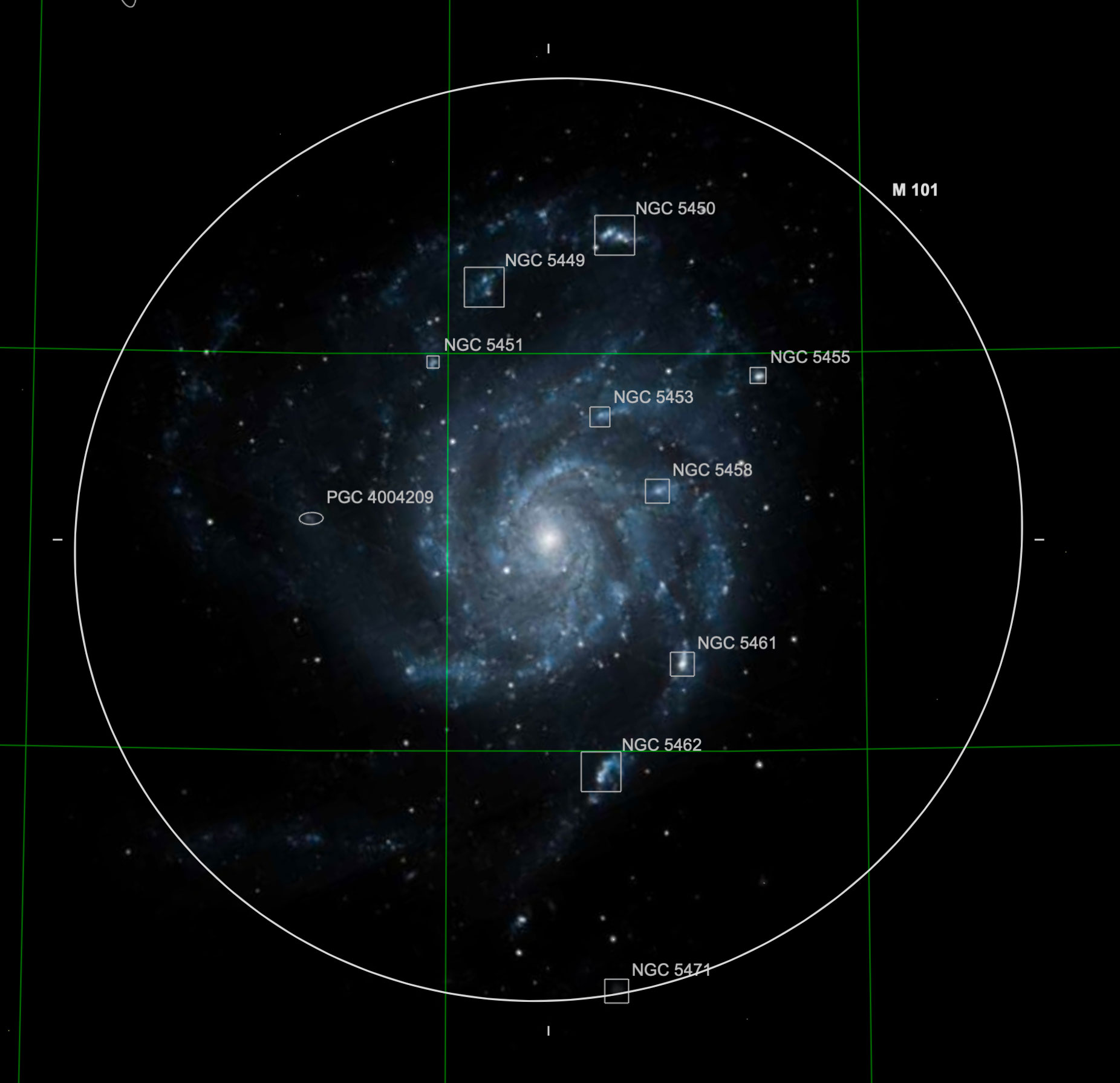Unistellar eVscope (2) - H2 II Regions
What Are H II Regions? | H II Regions in M 33 (Triangulum Galaxy) | H II Regions in M 101 (Pinwheel Galaxy) | Final Words | Links || Appendix: eVscope (2) Photos
Archive
On this page, I describe my experiences with photographing H II regions in external Galaxies using my Unistellar eVscope and eVscope 2.
Note: I present the respective photos that were taken with the Vaonis Vespera on a separate page.
What Are H II Regions?
I do not want to give detailed explanations of H regions here, but only quote the introduction to H II regions on Wikipedia:
An H II region or HII region is a region of interstellar atomic hydrogen that is ionized. It is typically in a molecular cloud of partially ionized gas in which star formation has recently taken place, with a size ranging from one to hundreds of light years, and density from a few to about a million particles per cubic centimetre. The Orion Nebula, now known to be an H II region, was observed in 1610 by Nicolas-Claude Fabri de Peiresc by telescope, the first such object discovered.
The regions may be of any shape because the distribution of the stars and gas inside them is irregular. The short-lived blue stars created in these regions emit copious amounts of ultraviolet light that ionize the surrounding gas. H II regions - sometimes several hundred light-years across - are often associated with giant molecular clouds. They often appear clumpy and filamentary, sometimes showing intricate shapes such as the Horsehead Nebula. H II regions may give birth to thousands of stars over a period of several million years. In the end, supernova explosions and strong stellar winds from the most massive stars in the resulting star cluster disperse the gases of the H II region, leaving a cluster of stars which have formed (such as the Pleiades).
H II regions can be observed at considerable distances in the universe, and the study of extragalactic H II regions is important in determining the distances and chemical composition of galaxies. Spiral and irregular galaxies contain many H II regions, while elliptical galaxies are almost devoid of them. In spiral galaxies, including our Milky Way, H II regions are concentrated in the spiral arms, while in irregular galaxies they are distributed chaotically. Some galaxies contain huge H II regions, which may contain tens of thousands of stars. Examples include the 30 Doradus region in the Large Magellanic Cloud and NGC 604 in the Triangulum Galaxy.
More on this on Wikipedia!
H II Regions in M 33 (Triangulum Galaxy)
Wikipedia list of H II regions in M 33: IC 131, IC 132, IC 133, (IC 134*,) IC 135, IC 136, IC 137, IC 139, IC 140, IC 142, IC 143, NGC 588, NGC 592, NGC 595, NGC 604
*) IC 134 is a star
SkySafari map showing M 33 and its H II regions:
Indicated H II regions: IC 131, IC 132, IC 133, (IC 134*,) IC 135, IC 136, IC 137, IC 139, IC 140, IC 142, IC 143, NGC 588, NGC 592, NGC 595, NGC 604
*) IC 134 is a star
To find H II regions in my M 33 photos, I used the Website astrometry.net. I present the photo of M 33 (processed) next to the evaluation by astrometry.net.
eVscope
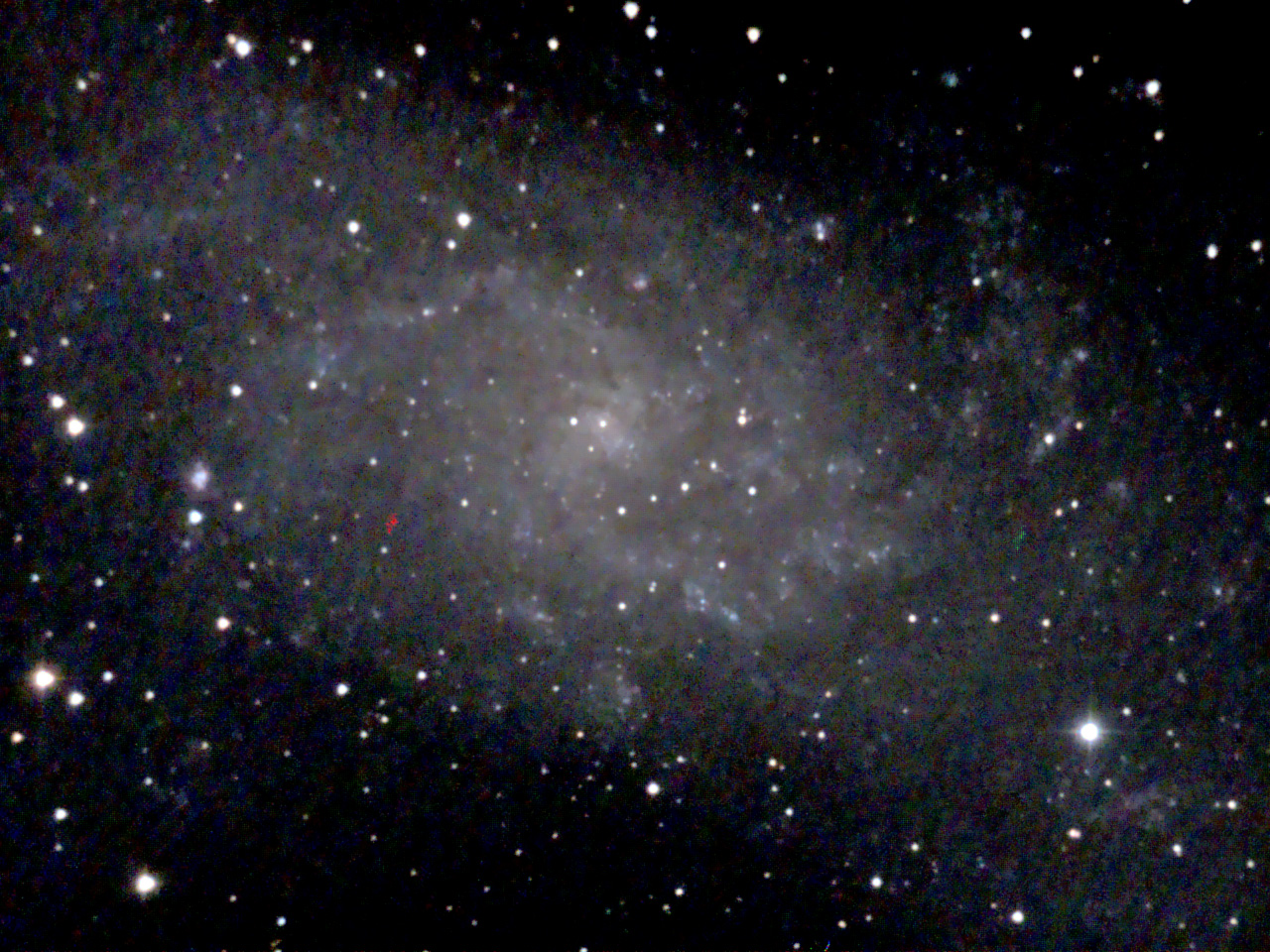 |
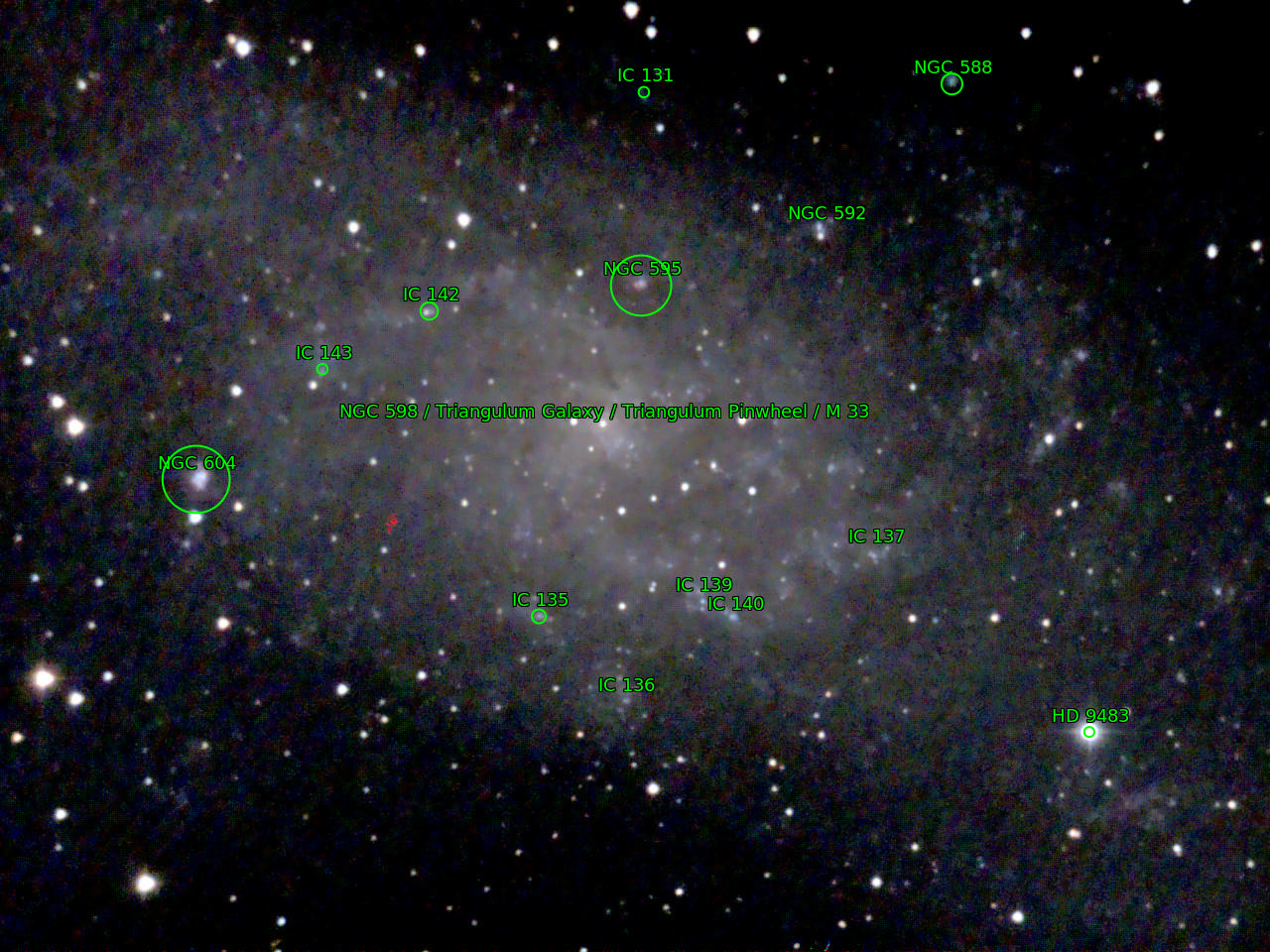 |
|
M 33 - Nov 14, 2020, processed |
Evaluation by astrometry.net |
H II regions found: IC 131, IC 135, IC 136, IC 137, IC 139, IC 140, IC 142, IC 143, NGC 588, NGC 592, NGC 595, NGC 604
Thus, some H II regions are missing...
eVscope 2
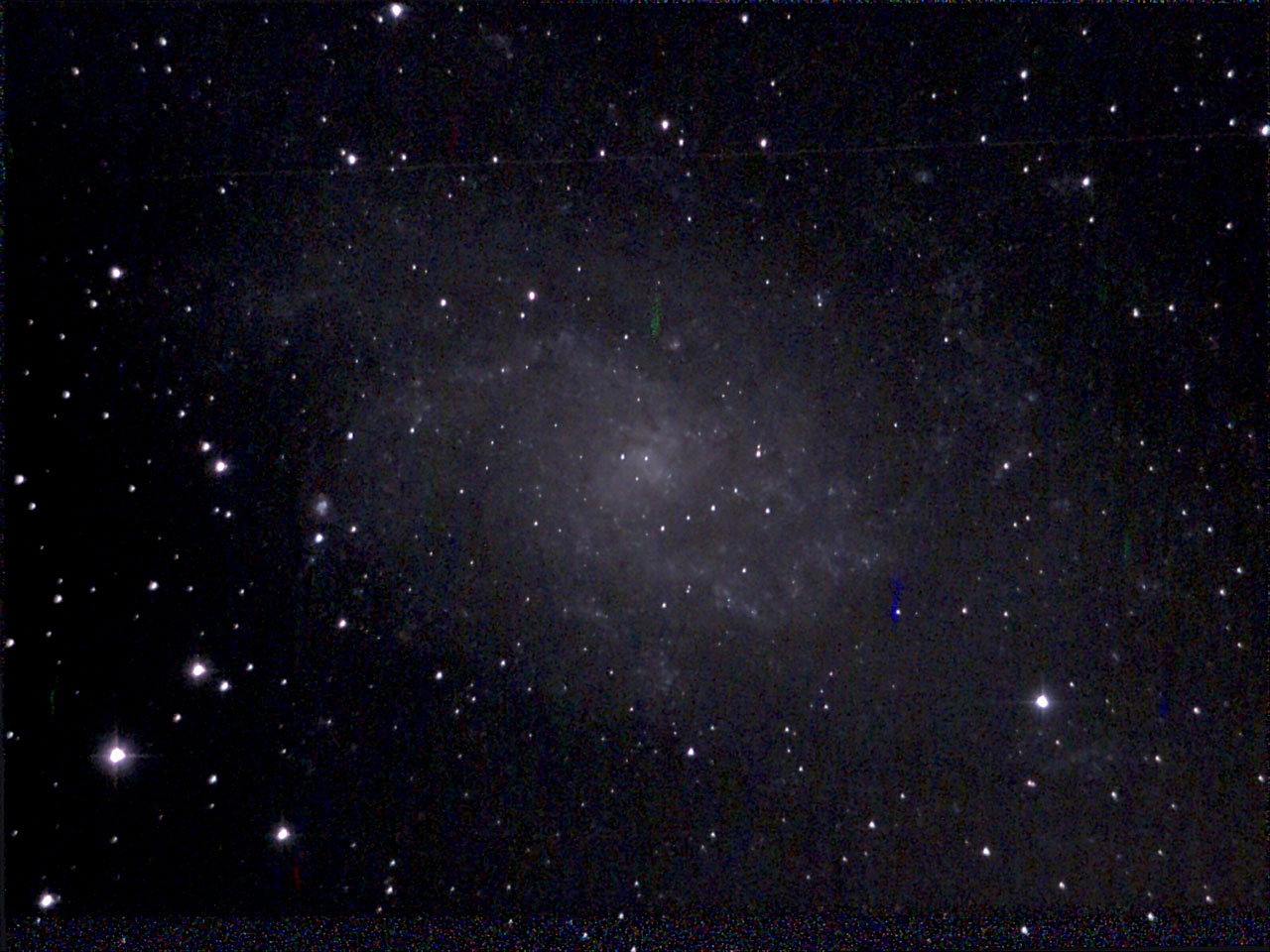 |
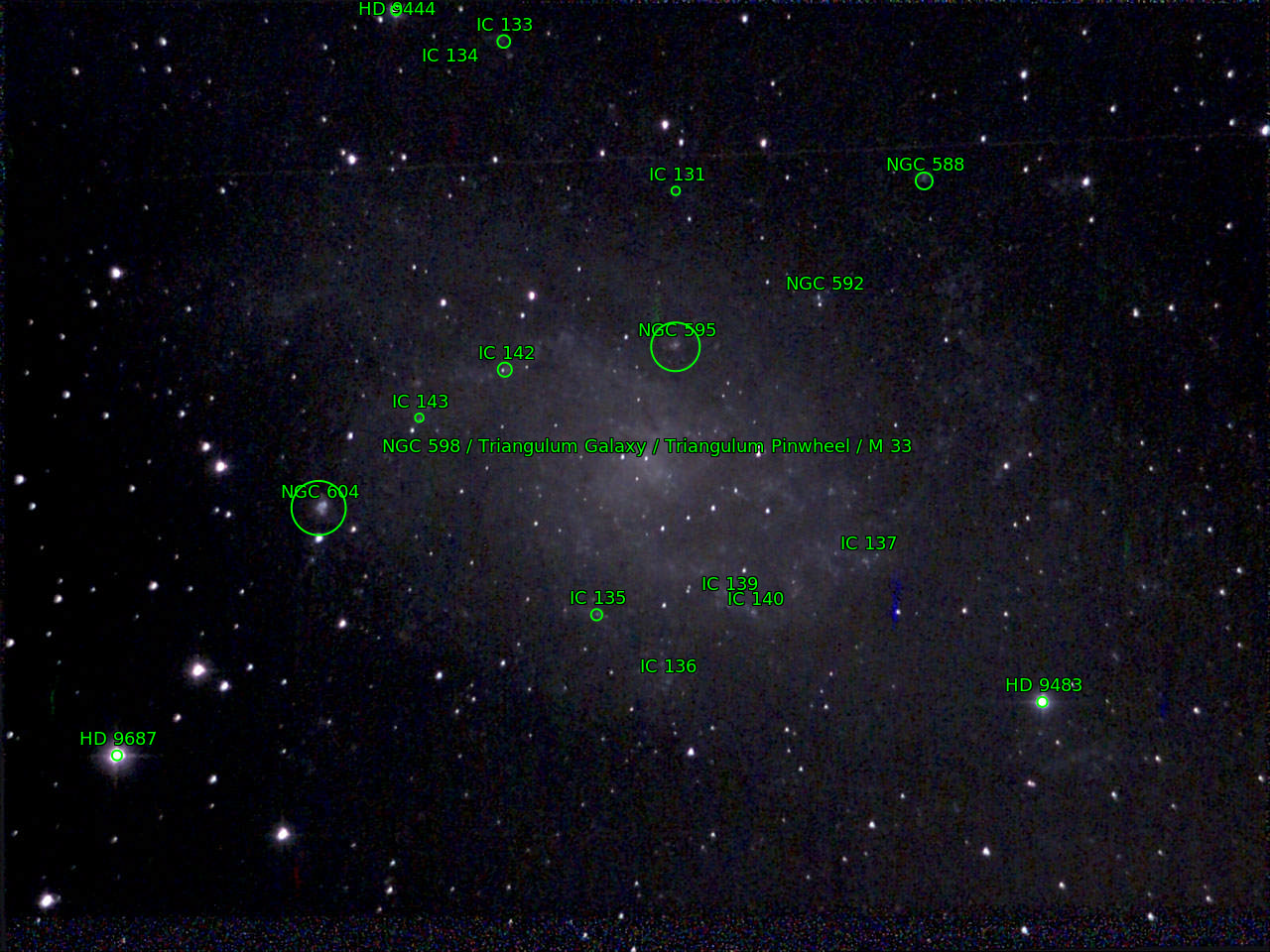 |
|
M 33 - Nov 2, 2022, processed |
Evaluation by astrometry.net |
H II regions found: : IC 131, IC 132*, IC 133, (IC 134,) IC 135, IC 136, IC 137, IC 139, IC 140, IC 142, IC 143, NGC 588, NGC 592, NGC 595, NGC 604
*) at the very top, only the ring is visible (identified with the help of the Vespera photo)
Thus, all H II regions were found.
H II Regions in M 101 (Pinwheel Galaxy)
Wikipedia list of H II regions (only NGC objects): NGC 5449, NGC 5450 (NGC 5447), NGC 5451, NGC 5453, NGC 5455, NGC 5458, NGC 5461, NGC 5462, NGC 5471
SkySafari map showing M 101 and its H II regions:
Indicated H II regions on the map: NGC 5449, NGC 5450, NGC 5451, NGC 5453, NGC 5455, NGC 5458, NGC 5461, NGC 5462, NGC 5471
To find H II areas in M 101, I used astrometry.net and SkySafari. I present the respective photo of M 101 (processed) next to its evaluation by astrometry.net.
eVscope
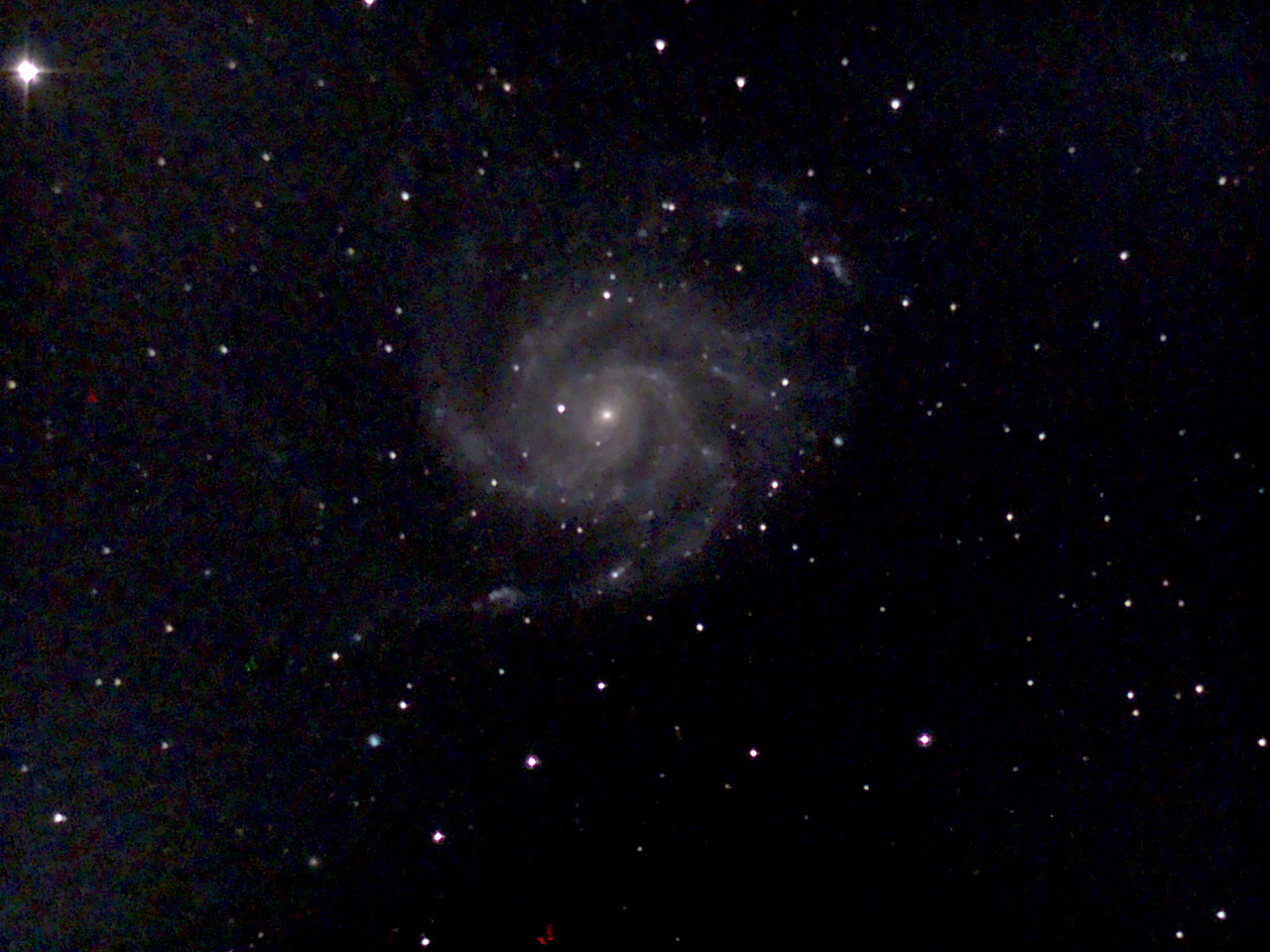 |
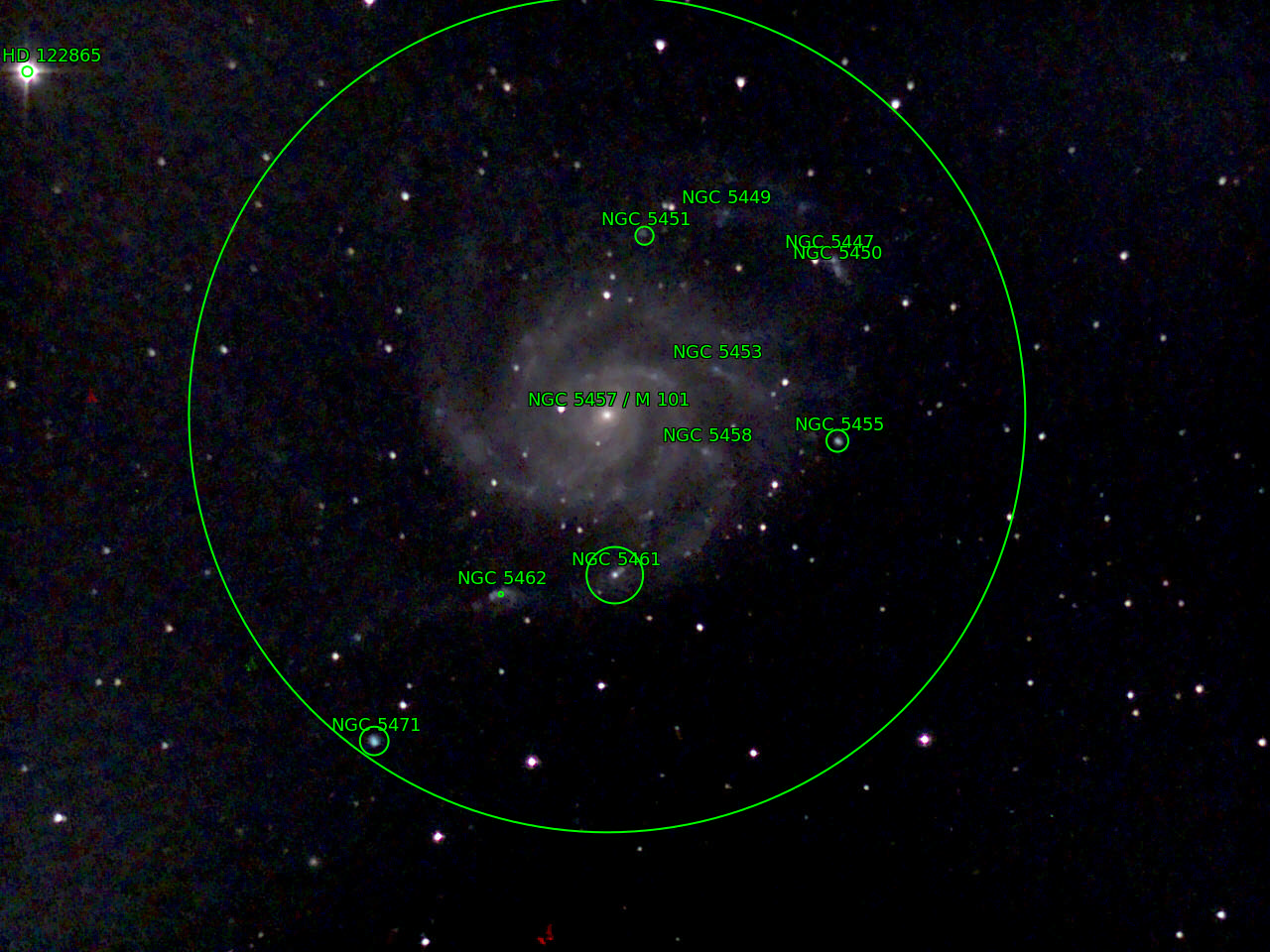 |
|
M 101 - Mar 6, 2021, processed |
Evaluation by astrometry.net |
H II regions found: NGC 5447/50, NGC 5449, NGC 5451, NGC 5453, NGC 5455, NGC 5458, NGC 5461, NGC 5462, NGC 5471
Thus, all H II regions were found.
eVscope 2
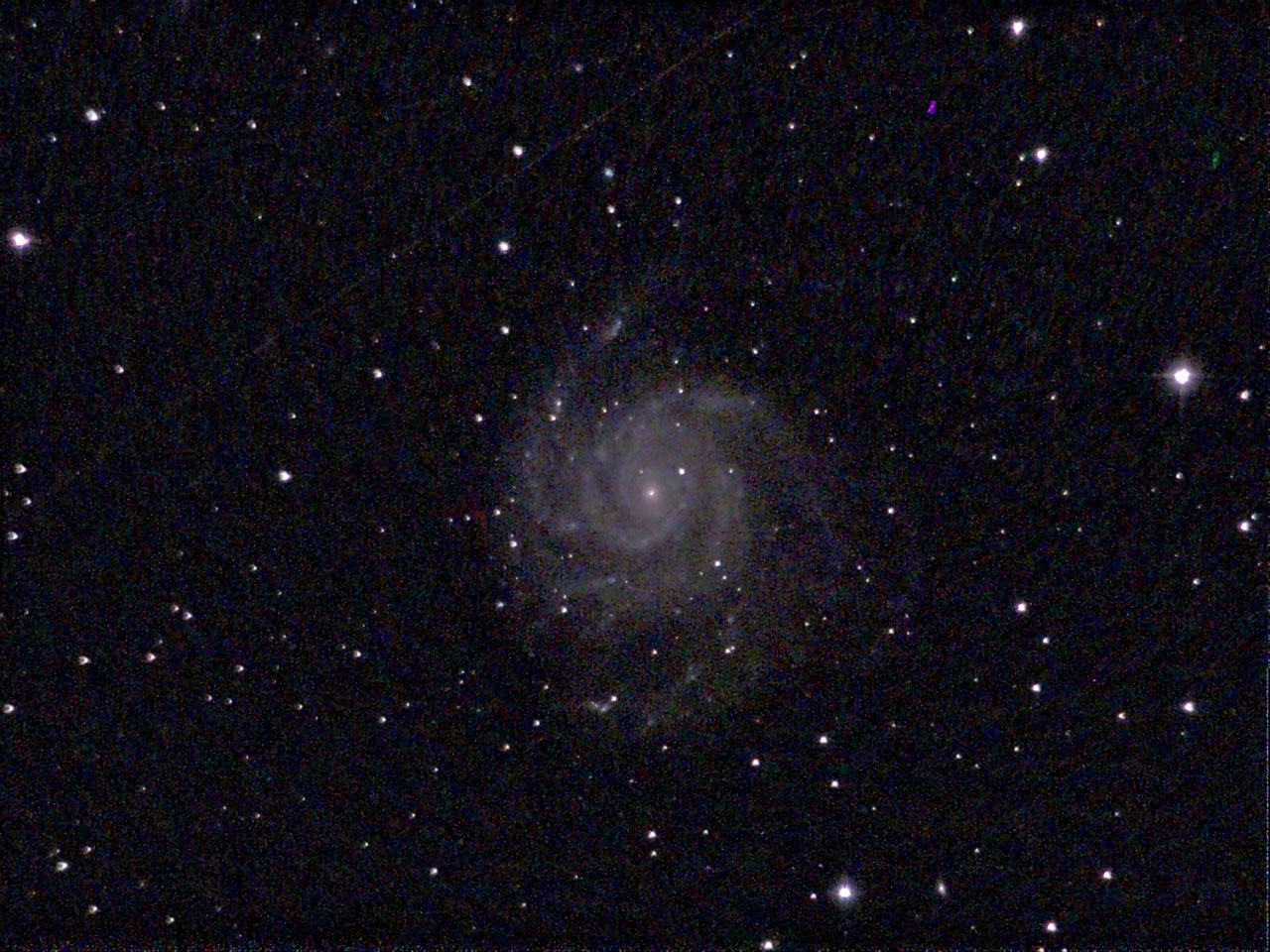 |
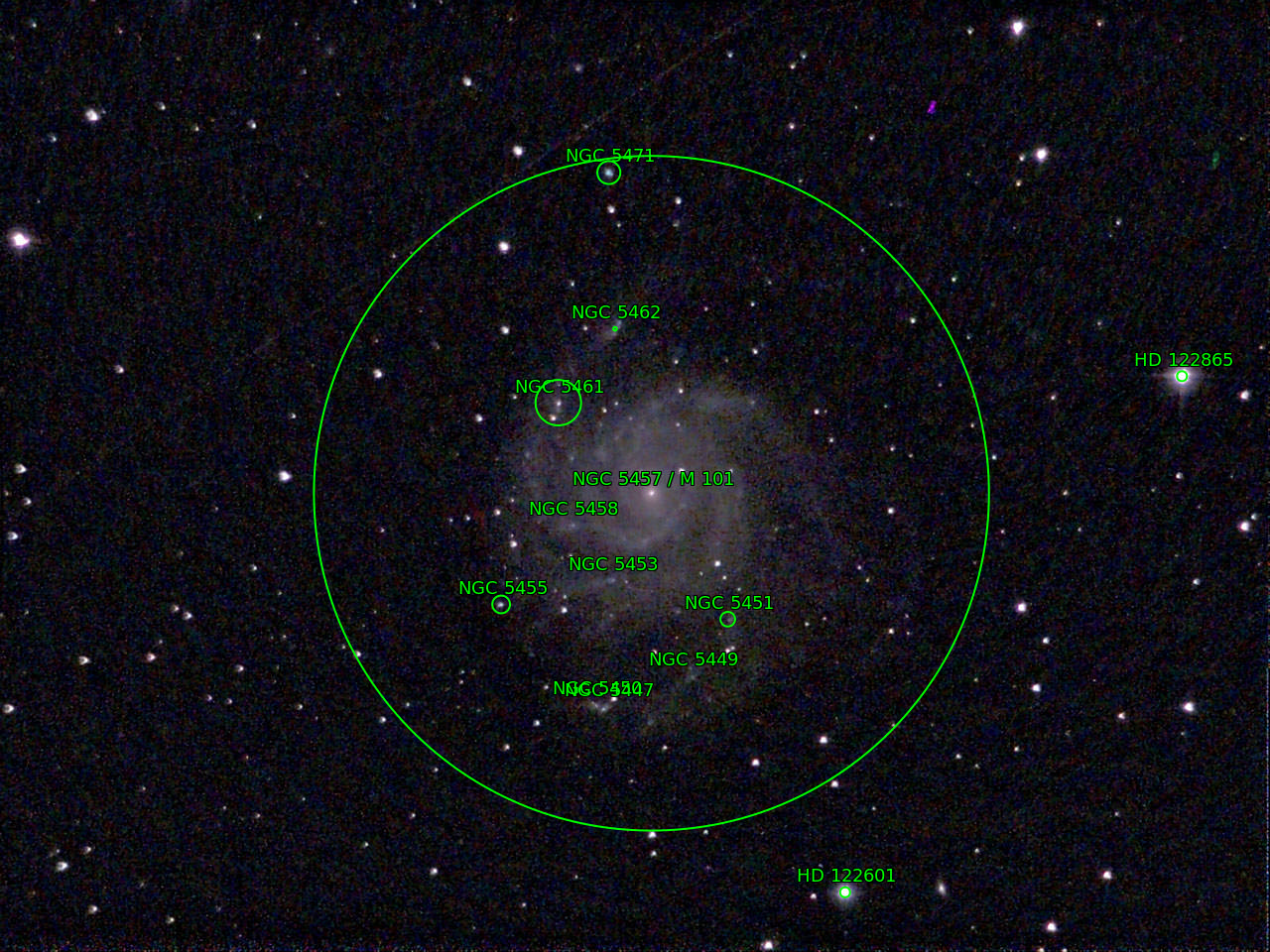 |
|
M 101 - 21.8.2023, bearbeitet |
Auswertung mit astrometry.net |
H II regions found: NGC 5447/50, NGC 5449, NGC 5451, NGC 5453, NGC 5455, NGC 5458, NGC 5461, NGC 5462, NGC 5471
Thus, all H II regions were found.
Final Words
My "entry" into H II regions was with the region NGC 604 within M 33, which I discovered on an eVscope photo of M 33:
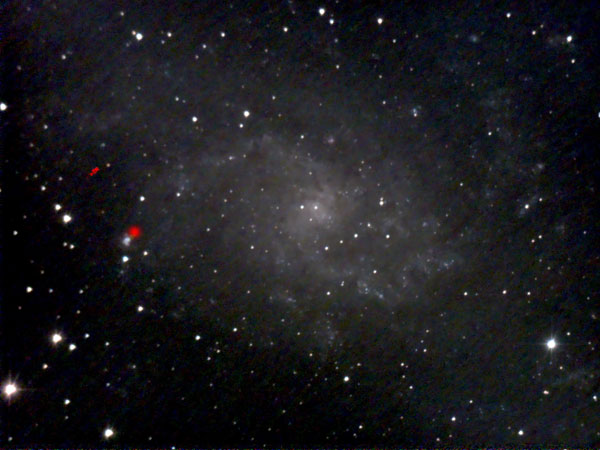 |
M 33 - Sep 7, 2020, processed; the red dot points to the brightest H II region in M 33, NGC 604 |
With the eVscope and eVscope 2, I was now able to detect all H II areas by evaluating an M 33 image for each telescope using astrometry.net. Also with M 101, I was able to find all the essential H-II areas on my eVscope (2) photos.
See also the evaluations for my Vespera photos on a separate page.
Links
- Unistellar eVscope Information
- Unistellar eVscope 2 Information
- H II Region (Wikipedia): en.wikipedia.org/wiki/H_II_region
- See also my page offering Astronomy Links.
| 11.06.2024 |
